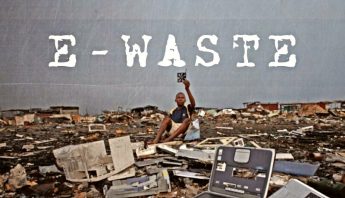My first mobile phone was a Nokia 1100. From my mid-teens, I used it well into my early twenties. Just like the relationships back in the day, mobile phones too, were made to stick around for millennia. It was so strong that instead of throwing a brick at someone, I was ready to throw my Nokia. I’m pretty sure most of you can relate to me.
Present-day mobile phones are smarter (smartphones) but are not as strong. They, along with other electronic devices such as laptops, computers, tablets, fans, air conditioners and TVs, have a shorter lifespan. A shorter lifespan, coupled with continuous innovations, have created a fast-paced market for electronic devices. But little do we pay attention to the aftermath of these waste-generating bandwagons.

According to a UN report on Waste Management, we dispose 20 to 50 million metric tons of e-waste worldwide. U.S. Environmental Protection Agency states that only 12.5% of this e-waste is recycled.
The rest end up in landfills and take a dreadful toll on the environment and our health. Once contaminated, the heavy metals and toxic chemicals in them pollute the air we breathe, seep through soil into groundwater and pollute the water we drink – causing deadly cancers and damages to our blood, kidneys, central and peripheral nervous systems.
Agbogbloshie in Ghana hosts the world’s largest e-waste dumpsite where underaged and low-incomed people are often found scavenging for scrap metal, even amidst explosive chemical reactions. As if the exposure to toxic waste isn’t bad enough, an alarming recent study links the landfill to hazardous food poisoning in the region.
But the problem is, our country does not have proper plans in place to handle the piling e-waste.
And the question is, how can we
as Rotaractors, contribute to solving it?
Stay tuned to learn about
our upcoming project “SALVAGE” ,
as we tap into this gnawing problem of our time.

Written By:
Rtr. Shafeeka Hafeez
( Assistant Secretary – 2019/20 )

